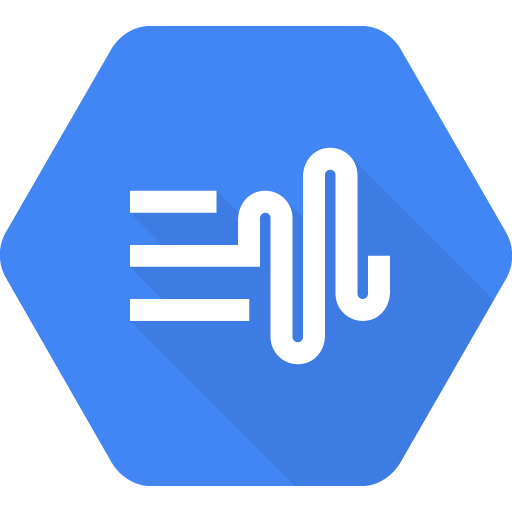Deepgram vs Google Cloud TTS
Speech recognition vs enterprise text-to-speech platform comparison for 2025
18 min read • Updated January 2025
Share to AI
Ask AI to summarize and analyze this article. Click any AI platform below to open with a pre-filled prompt.
Our Recommendation
Different technologies for different needs: Deepgram excels at speech-to-text with industry-leading accuracy, while Google Cloud TTS provides reliable text-to-speech for enterprise applications. Most businesses need both for complete voice solutions.
Deepgram
Deepgram Inc.

Pricing
- Free Tier: $200 credits
- Paid Plans: $0.0043-0.0077/min
- Enterprise: $15,000+/year enterprise
Best For
Google Cloud TTS
Google Cloud

Pricing
- Free Tier: 1M chars/month (Standard)
- Paid Plans: $4-16 per 1M chars
- Enterprise: Enterprise agreements available
Best For
Detailed Feature Comparison
| Feature | Deepgram | Google Cloud TTS |
|---|---|---|
| Primary Function | Speech-to-Text (ASR) | Text-to-Speech (TTS) |
| Languages | 36+ | 50+ |
| Voice Options | N/A (ASR only) | 380+ voices |
| Real-time Processing | ✓ (Sub-300ms) | ✓ (Streaming API) |
| On-premises Option | ✓ | ✗ |
| HIPAA Compliance | ✓ | ✓ |
| Custom Models | ✓ | ✓ (Preview) |
| Free Tier | $200 credits | 1M chars/month |
Pricing Breakdown
Deepgram Pricing
- • Pay-as-you-go: $0.0043/min (Pre-recorded), $0.0059/min (Streaming)
- • Growth: $4,000/year for ~15.5M minutes
- • Enterprise: $15,000+/year with custom features
Google Cloud TTS Pricing
- • Standard voices: $4 per 1M characters
- • WaveNet voices: $16 per 1M characters
- • Neural2/Studio: $16-$160 per 1M characters
When to Use Each Platform
Choose Deepgram When:
- ✓ You need to transcribe audio to text with high accuracy
- ✓ Real-time transcription latency is critical
- ✓ Processing large volumes of audio (call centers, meetings)
- ✓ Medical or legal transcription requiring compliance
- ✓ On-premises deployment is required
Choose Google Cloud TTS When:
- ✓ You need to convert text to natural-sounding speech
- ✓ Building IVR systems or voice assistants
- ✓ Already using Google Cloud infrastructure
- ✓ Need support for 50+ languages
- ✓ Enterprise reliability with SLA is required
Better Together: Complete Voice Solutions
Deepgram and Google Cloud TTS serve complementary purposes. Many enterprises use both to create complete voice-enabled applications.
Voice Input
Use Deepgram to convert user speech to text
Process & Respond
Your application logic processes the request
Voice Output
Use Google TTS to speak the response
Deepgram vs Google Cloud TTS: Complete Analysis
When building voice-enabled applications, understanding the distinction between speech recognition (ASR) and text-to-speech (TTS) is crucial. Deepgram and Google Cloud TTS represent best-in-class solutions for their respective domains, serving fundamentally different but often complementary purposes.
Understanding the Technology Difference
Deepgram specializes in Automatic Speech Recognition (ASR), converting spoken audio into text with remarkable accuracy. Their Nova-3 model achieves a 54.2% reduction in word error rate compared to previous generations, processing over 50,000 years of audio annually for enterprise customers.
Google Cloud Text-to-Speech, conversely, transforms written text into natural-sounding speech. With 380+ voices across 50+ languages and advanced WaveNet technology, it powers everything from mobile apps to enterprise IVR systems.
Performance and Technical Capabilities
Deepgram's ASR Excellence
Deepgram's real-time transcription achieves sub-300ms latency, making it ideal for live applications. The platform handles multiple speakers, background noise, and various accents with impressive accuracy. Their medical-specific Nova-3 Medical model ensures HIPAA compliance for healthcare applications.
Google Cloud TTS's Voice Quality
Google's WaveNet and Neural2 voices produce remarkably human-like speech. The Studio voices, while premium-priced, offer broadcast-quality output suitable for professional narration. SSML support enables fine-grained control over pronunciation, emphasis, and pacing.
Pricing Strategy Comparison
Deepgram's pricing scales with usage volume, starting at $0.0043 per minute for pre-recorded audio. Heavy users benefit from Growth ($4,000/year) and Enterprise plans that significantly reduce per-minute costs.
Google Cloud TTS uses character-based pricing, ranging from $4 per million characters for standard voices to $160 per million for premium Studio voices. The generous free tier (1M characters/month) supports development and testing.
Real-World Implementation Scenarios
Call Center Modernization
A typical implementation uses Deepgram to transcribe customer calls in real-time, enabling sentiment analysis and compliance monitoring. Google Cloud TTS then powers automated responses and IVR prompts, creating a complete conversational experience.
Accessibility Solutions
Educational platforms leverage Deepgram for live captioning of lectures and meetings. Google Cloud TTS provides audio versions of written content, ensuring comprehensive accessibility for users with different needs.
Developer Experience and Integration
Both platforms offer robust APIs with comprehensive SDKs. Deepgram provides WebSocket connections for streaming transcription, while Google Cloud TTS integrates seamlessly with other GCP services. Python, JavaScript, and other major languages are well-supported.
Security and Compliance Considerations
Deepgram offers on-premises deployment for organizations with strict data residency requirements. Both platforms maintain SOC 2 compliance and support HIPAA-compliant implementations, though configuration requirements differ.
Making the Right Choice
The decision isn't typically "either/or" but rather "when to use each." Modern voice applications often require both capabilities: Deepgram for understanding user input and Google Cloud TTS for generating responses.
Consider your specific use case: transcription services, meeting notes, and call analytics clearly favor Deepgram. Audiobook creation, voice assistants, and notification systems benefit from Google Cloud TTS. Many applications, from virtual assistants to accessibility tools, require both technologies working in harmony.
Frequently Asked Questions
Can I use Deepgram for text-to-speech?
No, Deepgram specializes in speech-to-text (ASR) only. For text-to-speech, you'll need a TTS solution like Google Cloud TTS, ElevenLabs, or Amazon Polly.
Can Google Cloud TTS transcribe audio?
No, Google Cloud TTS only converts text to speech. For speech-to-text transcription, use Google Cloud Speech-to-Text API or alternatives like Deepgram.
Which is more cost-effective for high volume?
It depends on your use case. Deepgram's enterprise plans offer significant volume discounts for transcription. Google Cloud TTS standard voices remain cost-effective at scale, but premium voices can become expensive.
Can I use both together in one application?
Absolutely! Many voice applications use Deepgram for speech recognition and Google Cloud TTS for speech synthesis, creating complete conversational experiences.
Explore Alternatives
Speech Recognition Alternatives to Deepgram
- → Google Cloud Speech-to-Text
- → Amazon Transcribe
- → AssemblyAI
- → Rev.ai
Text-to-Speech Alternatives to Google Cloud TTS
- → Amazon Polly
- → Microsoft Azure TTS
- → ElevenLabs
- → Play.ht
Join our AI newsletter
Get expert analysis, cost comparisons, and strategic insights on AI voice tools and speech technology platforms delivered to your inbox weekly.